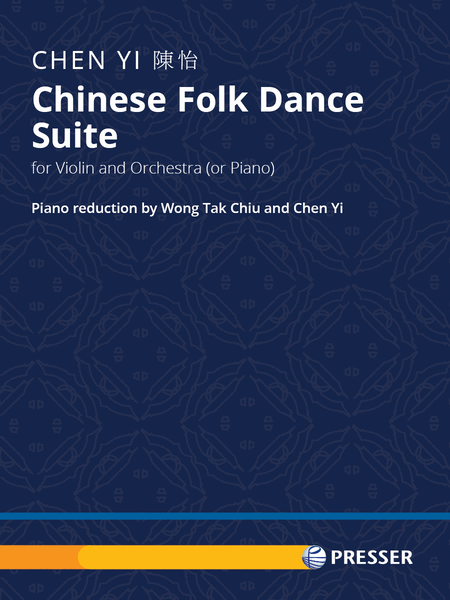Chinese Folk Dance Suite
-
Ships in 1 to 2 weeks
Details
- Instruments
- Ensembles
- Genres
- Composers
- Publishers
- Formats
- Item Types
- Musical Forms
- Usages
Description
SKU: PR.114419280
Composed by Chen Yi. Arranged by Wong Tak Chiu. Performance Score. 32+12 pages. Duration 20 minutes. Theodore Presser Company #114-41928. Published by Theodore Presser Company (PR.114419280).ISBN 9781491132357. UPC: 680160676125.
Inspired by Chinese tradition, this concerto-like dance suite includes: 1. Lion Dance, 2. YangKo, and 3. Muqam. Each movement draws from melodies and rhythms characteristic of various regions of China many centuries ago. CHINESE FOLK DANCE SUITE is available for violin with full orchestra, or as a recital work with piano.
Supported by a major commissioning award from the Serge Koussevitzky Music Foundation in the Library of Congress, Chinese Folk Dance Suite is written for solo violin and orchestra; it was premiered by The Women’s Philharmonic with violin soloist Terrie Baune, conducted by Apo Hsu, on March 10, 2001, at Yerba Buena Center For the Arts Theater in San Francisco.Inspired by various Chinese traditional folk dances, the suite has three movements:I. Lion Dance. Traditionally, people dance with richly decorated hand-made lions, accompanied by percussion ensemble, to celebrate happy occasions and major festivals throughout the country. In this composition, I use Chinese drum and other percussion instruments in the background, to form a dynamic and rhythmic texture responding to the solo part, which imitates the tunes played on the suona (traditional Chinese trumpet). The pitch materials came from the traditional Guangdong tune “Dragon Boat Racing,” and the Chaozhou tune “Lion Playing Ball.”II. YangKo. Originating in northern China, this is a major folk dance form in mass performance popularized in the country. In YangKo performance, people play rhythmic patterns on the drums hung around their waists while singing and dancing. In the second movement, I imagined a warm scene of YangKo dancing in distance. The solo violin plays a sweet and gracious melodic line while all members of the orchestra sing non-pitched syllables in different layers as the soft background, to imitate the percussion sound which produces the ever-going pulse.III. Muqam. This large-scale music and dance form, from the Uygur nationality in Xinjiang province, originated in the 15th century. My third movement use a 7/8 meter and the melodic style of Muqam music. The fiery dancing gesture culminates in the sustained climax section at the end of the work, after a colorful violin cadenza in both improvisational singing style and polyphonic writing with woven lines.

 Share
Share